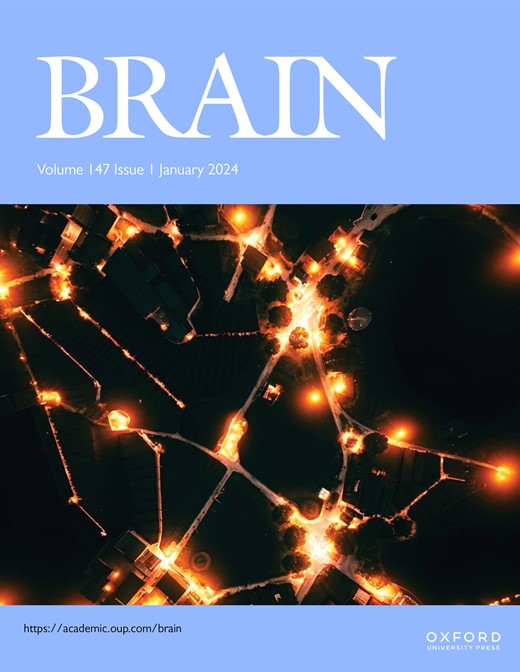脊髓性肌萎缩症的子宫内治疗:更接近临床翻译
IF 10.6
1区 医学
Q1 CLINICAL NEUROLOGY
引用次数: 0
摘要
5q-脊髓性肌萎缩症(SMA)一直是开发遗传性疾病先进疗法的先驱。SMA是一种常染色体隐性遗传病,主要影响脊髓前角和脑干运动核的运动神经元,但目前被认为是一种全身性疾病。对SMA遗传学的理解的进步导致了疾病修饰疗法的发展,要么转移SMN1的健康版本,SMA中缺失或改变的致病基因,要么调节SMN2,一种高度同源但功能较差的SMN1版本,存在于所有患者中。在成功的临床试验之后,这些方法已经产生了三种上市治疗方法。严重的SMA,“I型”,是最常见的类型,被认为是发育停止和神经退行性疾病。由于I型患者的病理在胎儿期就开始了,即使在出生后不久就开始治疗,症状前或轻度症状状态也不太可能治愈。子宫内胎儿治疗提供了进一步减轻或可能预防疾病表现的机会。本文讨论了SMA的临床和发展方面,已批准的先进治疗方法(基因治疗,反义寡核苷酸和小分子化合物),以及在子宫内开始治疗的理由,选择和挑战,包括伦理和安全问题。除了产前干预的零星病例报告外,可以设想子宫内SMA治疗的临床试验,并应仔细设计和评估,以更接近临床转化。本文章由计算机程序翻译,如有差异,请以英文原文为准。
In utero therapy for spinal muscular atrophy: closer to clinical translation
5q-Spinal muscular atrophy (SMA) has been a trailblazer in the development of advanced therapies for inherited diseases. SMA is an autosomal recessive disorder affecting mainly motor neurons in the anterior horn of the spinal cord and brainstem motor nuclei, but currently considered a systemic disease. Advances in understanding of the genetics of SMA led to the development of disease modifying therapies, either transferring a healthy version of SMN1, the causative gene absent or altered in SMA, or modulating SMN2, a highly homologous but less functional version of SMN1, present in all patients. After successful clinical trials, these approaches have resulted in three marketed therapies. Severe SMA, “type I”, is the most common type and is considered both a developmental arrest and neurodegenerative disorder. As pathology starts during fetal life in type I patients, a cure is unlikely even when treatment is started shortly after birth in the pre- or mildly symptomatic state. In utero fetal therapy offers the opportunity to mitigate further or possibly prevent manifestations of the disease. This review discusses clinical and developmental aspects of SMA, the advanced therapies approved (gene therapy, antisense oligonucleotide and small molecule compounds), and the rationale, options and challenges, including ethical and safety issues, to initiate in utero therapy. Looking beyond sporadic case reports of prenatal intervention, clinical trials of in utero SMA therapy can be envisaged and should be carefully designed and evaluated to move closer to clinical translation.
求助全文
通过发布文献求助,成功后即可免费获取论文全文。
去求助
来源期刊

Brain
医学-临床神经学
CiteScore
20.30
自引率
4.10%
发文量
458
审稿时长
3-6 weeks
期刊介绍:
Brain, a journal focused on clinical neurology and translational neuroscience, has been publishing landmark papers since 1878. The journal aims to expand its scope by including studies that shed light on disease mechanisms and conducting innovative clinical trials for brain disorders. With a wide range of topics covered, the Editorial Board represents the international readership and diverse coverage of the journal. Accepted articles are promptly posted online, typically within a few weeks of acceptance. As of 2022, Brain holds an impressive impact factor of 14.5, according to the Journal Citation Reports.
 求助内容:
求助内容: 应助结果提醒方式:
应助结果提醒方式:


